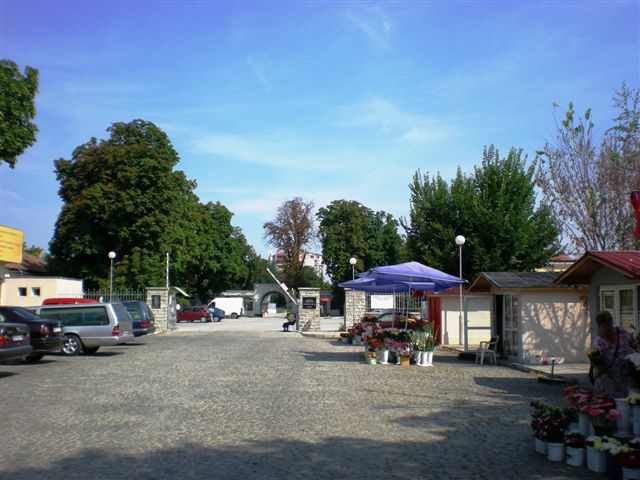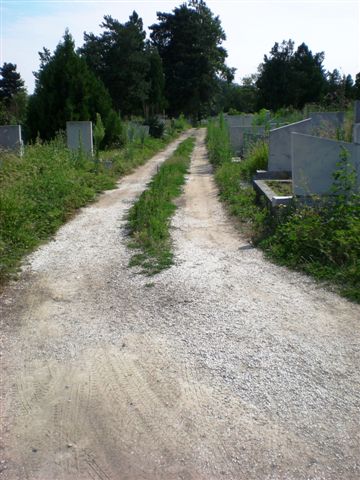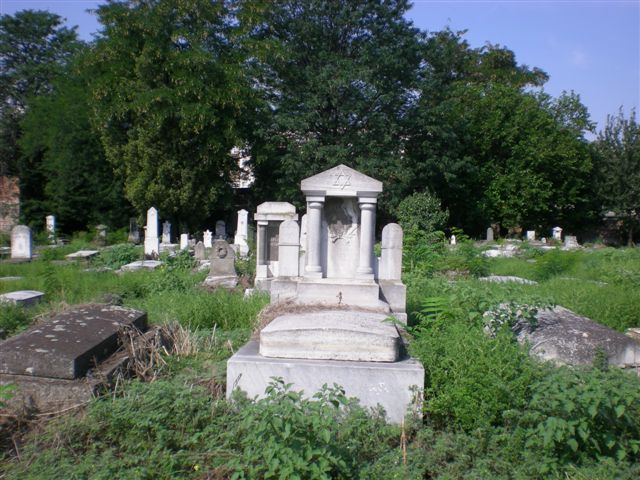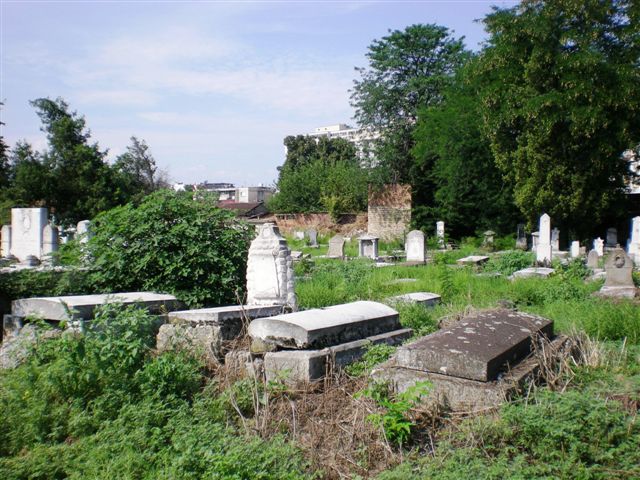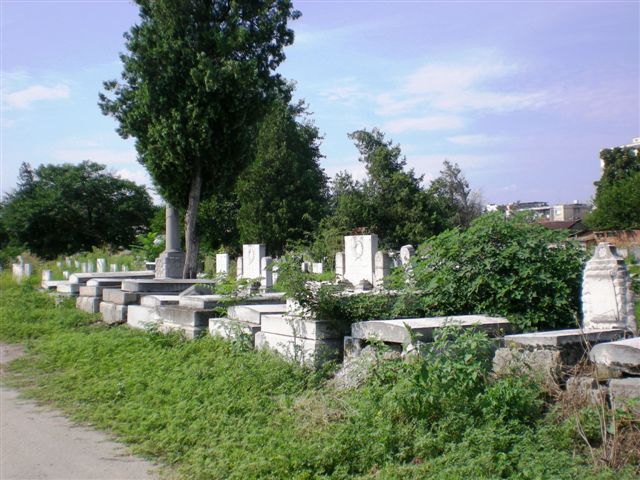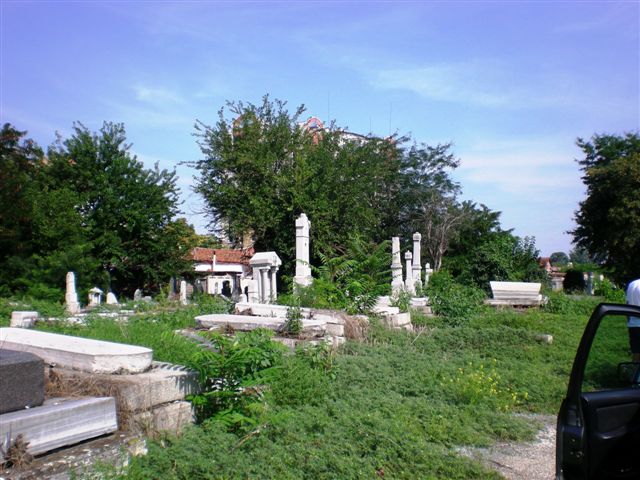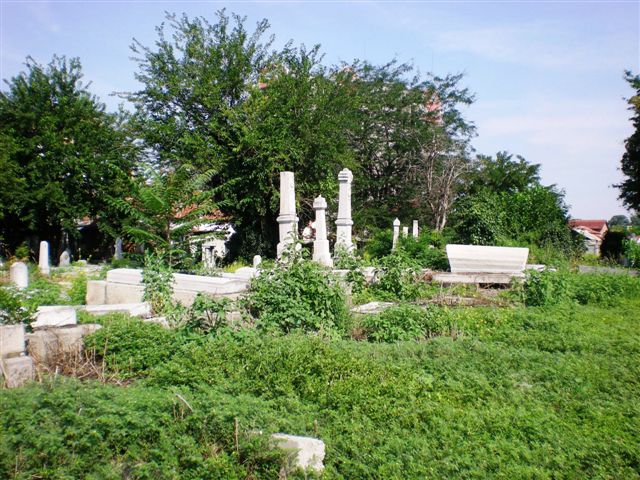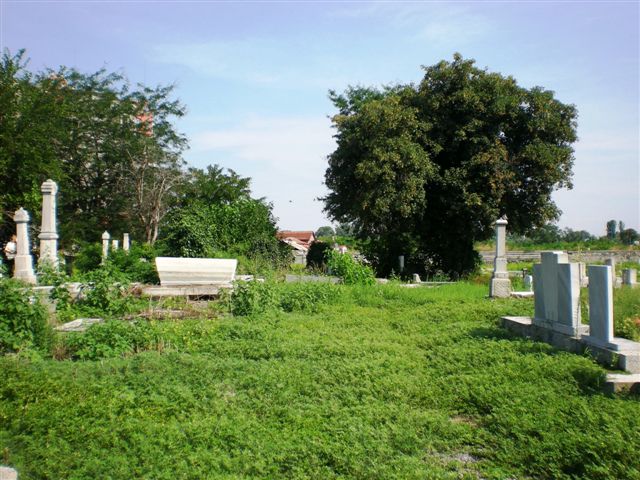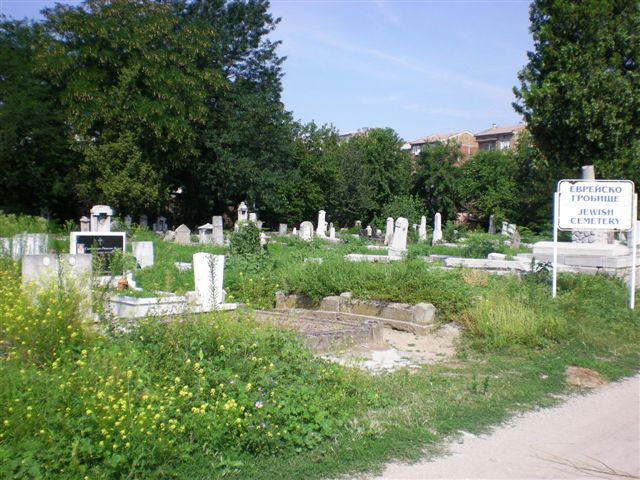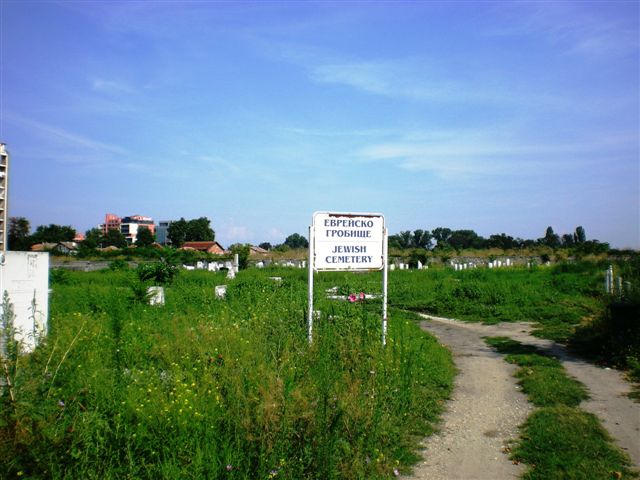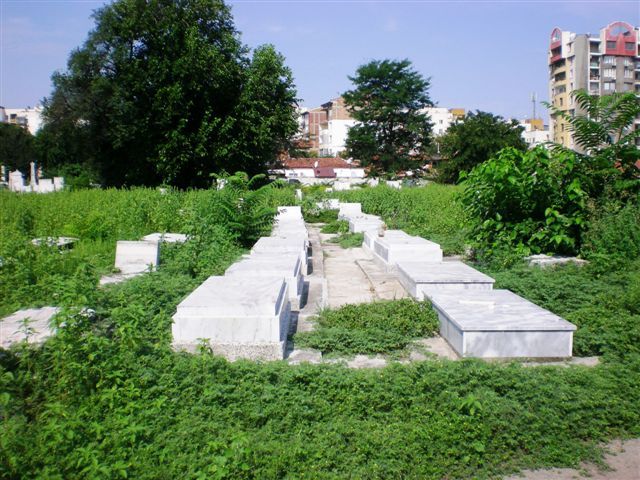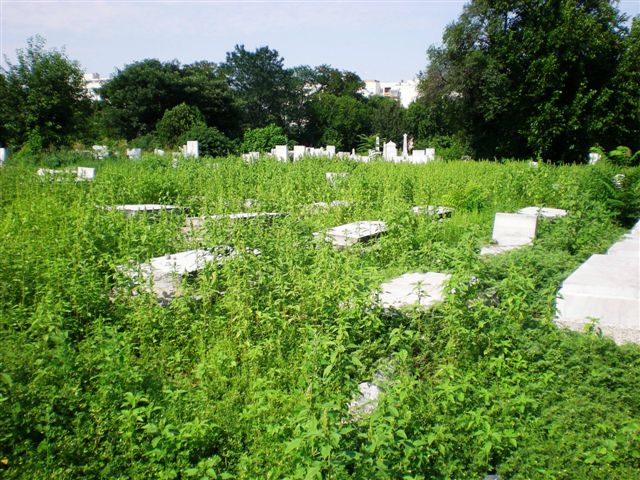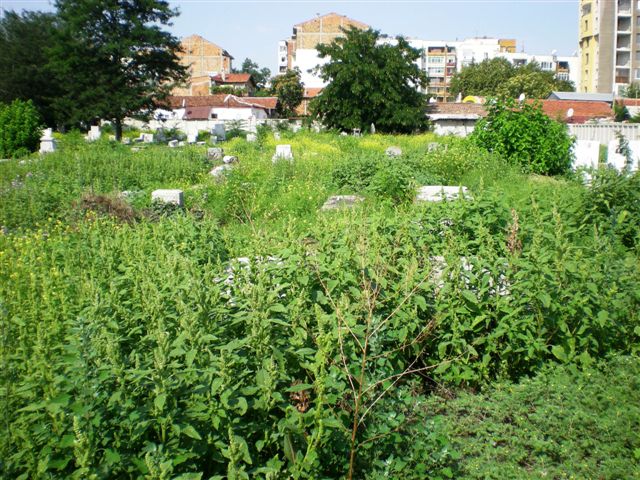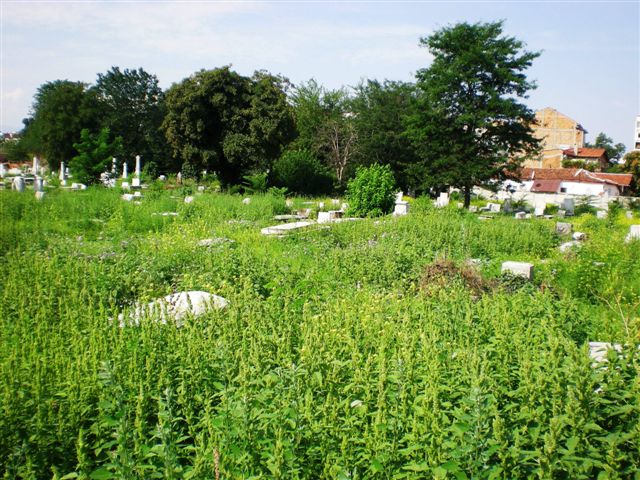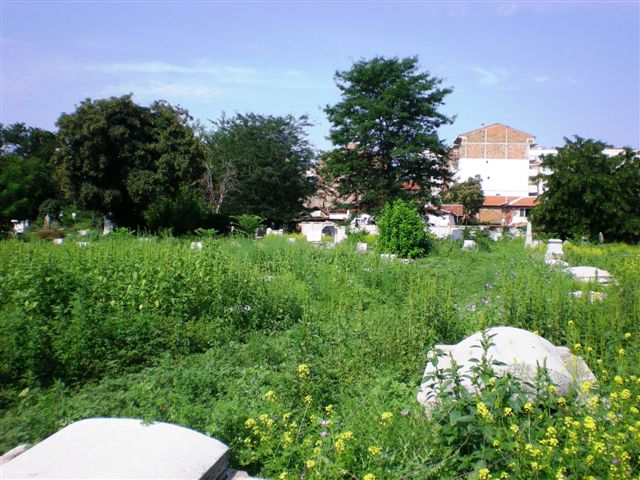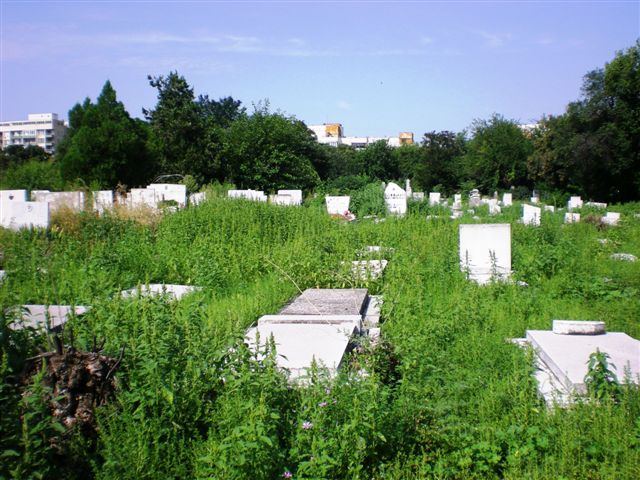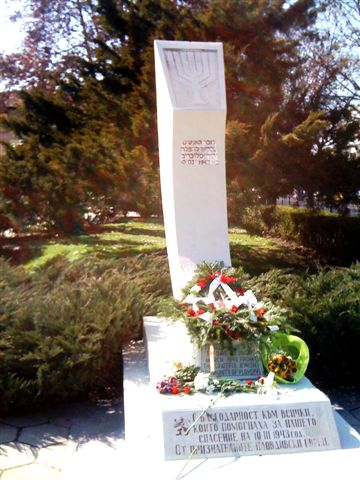Alternate names: Plovdiv and Пловдив [Bulg], Filibe [Turk], Philippopoli and ΦΙΛΙΠΠΟΎΠΟΛΗ[Grk], Vinipoppolis, Poulpoudeva, Plovdin, Ploudin, Pinople, Philippopolis, Philippopel, Filipopol, Filiba. 42°09' N, 24°45' E, second-largest city in Bulgaria. In Thrace, central Bulgaria, 82 miles ESE of Sofiya.
Plovdiv is an ancient settlement, known in antiquity as Philippopolis or Trimontsium and long been key to trading routes connecting Europe to the Middle East. A continuous Jewish presence in the town since at least the Byzantine era resulted in the remarkable discovery of a third-century CE synagogue that adds Jewish heritage to the town's impressive Roman presence. The modern Jewish community mostly descends from Sephardim who arrived in around 1496. The community numbered about 5,000 before WWI. Ninety percent emigrated to Israel in 1948. About 300-400 Jews live in the city about 2014.
Jewish community: Tsar Kalojan St. 15 (In the courtyard of a large apartment complex)
Ancient Synagogue: During 1981 archaeological excavations near the Central Post Office, remains of a second or third century CE synagogue were uncovered. The mosaic floor of the building removed and restored is part of the collection of the Plovdiv Archaeological Museum. The site lay in an insula, or lower-status residential complex, within the old walled city of Philipopolis, not far from a cluster of ancient baths and a basilica. Only substructure and a few upper parts, with traces of later reconstruction, were preserved. The building and its associated forecourt, which probably included a well, filled the width of the insula, about 20 meters in length. The synagogue itself was a 13.5 meter long basilican form with a central nave 9 meters wide and aisles each 2.6 meters wide. The building faced south to Jerusalem with the forecourt to the north facing the easternmost north-south street of the city. Two floor-levels were excavated. Three high-quality mosaics, each about 3-3.8 meters square, were found in the building's central nave. The middle panel depicted a menorah and lulav with a donor's inscription. The side panels contained a Greek inscription: "Thanks to the sources and due to the Cosmian's prudence, so-called Joseph decorated (the synagogue), bless them all" [sic]. The synagogue apparently was demolished and restored on two subsequent occasions. The first during the Gothic invasions, and the second was during Christian persecution at the beginning of the fifth century when a new mosaic with 5th- or 6th-century Byzantine geometric and floral patterns was laid over the earlier one. Web site on Ancient Philippopolis [Sept 2014]
Another synagogue founded in Plovdiv in 1850 by Jewish settlers from nearby Karlovo, who founded a synagogue in Plovdiv in 1850, was demolished in 1955. The site on Ortho Mezar square in front of the Turkish Baths has been restored to the Plovdiv Jewish community. In 1989, the local Jewish community erected a monument in Plovdiv city centernear the corner of Sixth of September Blvd and Russki Blvd, acknowledging the protection they afforded offered during the Holocaust. The curved, white stone stele monument is inscribed with a menorah. The Hebrew, English and Bulgarian inscription reads: "To all who help save us on 10 March 1943. From the grateful Jewish community of Plovdiv." [Sept 2014]
Zion Synagogue: Tsar Kaloyan St 13. Modern city streets and building mostly replace Plovdiv's former Jewish quarter, but this synagogue is the only one in Bulgaria outside Sofia in which services still are held. A synagogue possibly existed in 1711, but the current structure, one of the first synagogues to have been built after independence in 1878, also is one of the best surviving examples of Ottoman-style Balkan synagogue architecture. The 12-meter square building with a nondescript exterior, inside is elaborately decorated. The rich blue-and-green color scheme features Middle Eastern geometric designs completed by a Venetian glass chandelier and a gilded Ark. The synagogue was renovated and restored in 2003 with financial assistance from the United States Commission for the Preservation of America's Heritage Abroad. A cultural center and school were added to the complex. A small granite memorial to Jews who died fighting anti-Semitism and fascism can be seen. [Sept 2014]
The Bulgarian Jewish community survived WWII intact, but about half immigrated to Israel. For the remainder, Communist Party controlled lives and institutions meant religious life was vurtually eradicated. Art treasures were damaged, snagogues abandoned or appropriated, ritual objects sold or stolen. Since 1989, the Bulgarian Jewish community filed claims for several properties. After 1989, Plovdiv's Jews erected a menorah-shaped monument in the center of Plovdiv in a park on the edge of Plovdiv's Jewish Quarter, (Street 6 Septembe)r near Zion Synagogue. The inscription, in Hebrew, English and Bulgarian reads: "To all who helped to save us on 10 March, 1943. From the grateful Jewish Community of Plovdiv." [February 2009]
CEMETERIES:
Knyaginya Maria Louisa Blvd 73 Jewish Cemetery. The still active, 147 hectare Jewish cemetery with 2,600 granite and marble gravestones, is part of Plovdiv municipal cemetery. The earliest visible Jewish gravestones probably date from about 1878, including memorials to Jews who fought for the Russians in the Russo-Turkish War of that year. Inscriptions are in Bulgarian and Hebrew. While some 200 gravestones were destroyed or stolen, the vast majority are intact. Despite an increase in the overall size of the cemetery, the Jewish section lost some 1.5 hectares since 1938, partly legally as a result of boundary changes, but partly illegally because of Roma families' settlement. The site is open on the side facing the Christian cemetery, with a stone wall to the north, and with a concrete wall of over 2 meters to the NW a wall of concrete panels. Constructed by Shalom the fence separates the cemetery from the encroaching Roma families who live in the park with their domestic animals. The Plovdiv cemetery owned by the local authority and is managed by the municipal Funeral Activities Company, who keep it locked and guarded at night. Along with the local branch of Shalom, they control growth of vegetation, a big problem at the site. [Sept 2014]
Rogozho Chosse Street Cemetery: Between 1970 and 1990 Jews often were buried elsewhere including the Rogozhko Chosse Street cemetery, as some believed that both the Jewish and adjacent Turkish sections of the municipal cemetery were going to be closed. Today, a shortage of plots in the Christian section puts pressure on the site. Christian families sometimes are granted permission for burial in the Jewish area. Further, the remains of Jews who died in the struggle against fascism, i.e., the Nazis, have been moved to a central memorial, the Plovdiv Common Grave .[Sept 2014]
Pictures of the Jewish Cemetery, Zion Synagogue and the Holocaust monument
Photos below (Entrance Gate, Older Section, Newer Section, Holocaust Memorial) courtesy This email address is being protected from spambots. You need JavaScript enabled to view it. [August 2014]
"The Jewish Cemetery is located in the Central Cemetery Yard, Knyaginya Maria Luiza Blvd. 73.Lilyana Dimitrova is the old name. 1 kilometer from the city center."
Jewish Sector, General Cemetery [Aug 2015]
Cemetery: Entrance gates & Connecting road Old Section to New Section
Cemetery: Older Section
Cemetery: Newer Section
Holocaust Memorial

